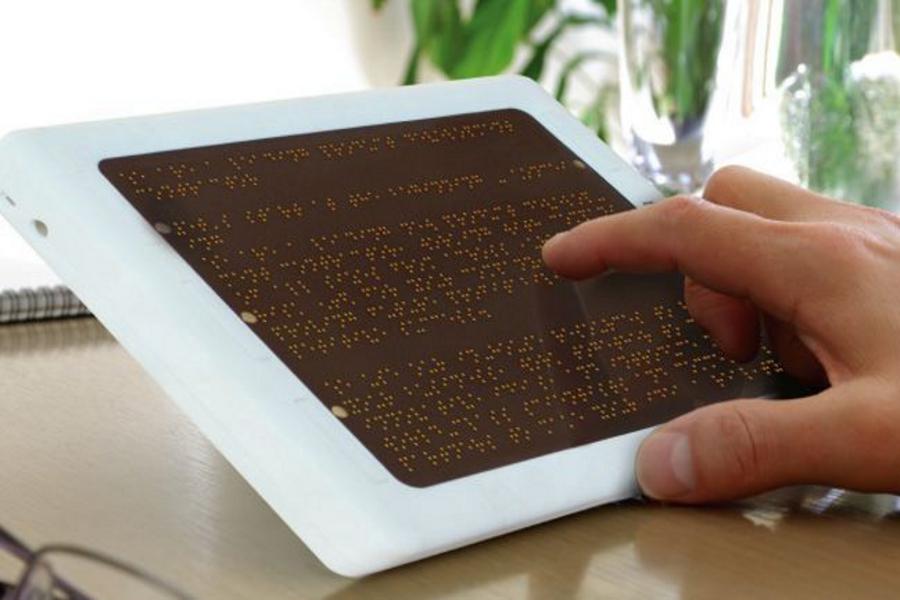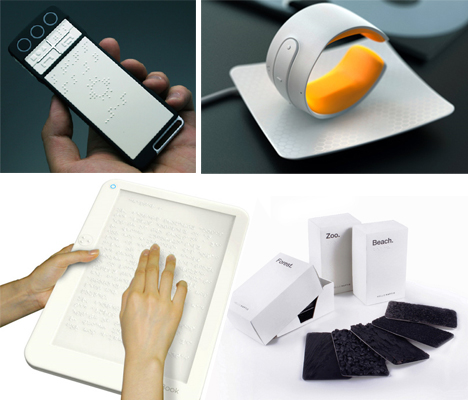Smart Glasses for the Visually Impaired: Innovations in Vision Support
Smart Glasses for the Visually Impaired: Innovations in Vision Support
Blog Article
Discover Innovative Devices Made for the Visually Damaged
The growth of innovative devices for the visually damaged stands for a considerable innovation in access and self-reliance. Technologies such as smart glasses with AI capacities and mobile applications created to supply acoustic descriptions are reshaping everyday experiences for users.
Smart Glasses for Navigation

Smart glasses created for navigating are changing the way aesthetically impaired individuals connect with their atmosphere. These innovative devices use a mix of camera modern technology, man-made knowledge, and auditory feedback to give real-time information concerning environments. By employing challenge discovery systems, clever glasses can notify customers to potential risks, making it possible for more secure wheelchair in both unfamiliar and familiar settings.
The combination of GPS modern technology even more boosts navigating capacities, enabling individuals to get auditory instructions as they move. This hands-free strategy not only cultivates self-reliance but also encourages aesthetically damaged people to navigate city landscapes with increased confidence. In addition, lots of smart glasses are outfitted with attributes that identify landmarks and street indications, offering contextual details that boosts the individual experience.
Furthermore, the development of these tools is consistently advancing, with companies working to boost the accuracy of object acknowledgment and expand the variety of navigational attributes. As smart glasses become much more budget friendly and obtainable, they hold the potential to considerably transform day-to-day life for visually impaired individuals. Inevitably, these cutting-edge tools stand for a critical step towards inclusivity, offering enhanced movement and a greater sense of freedom for individuals navigating the globe around them.

Mobile Application for Daily Living
Just how can mobile applications enhance the lives of aesthetically impaired people? Mobile applications are reinventing the means aesthetically damaged individuals browse their environments, handle daily tasks, and gain access to information. These applications offer vital assistance via different performances, cultivating independence and improving lifestyle.
Numerous ingenious mobile apps are made specifically for everyday living. Apps like Be My Eyes attach visually damaged individuals with sighted volunteers by means of video calls, permitting them to receive real-time aid with jobs such as reviewing labels or navigating unknown areas. Seeing AI, established by Microsoft, uses artificial knowledge to explain surroundings, reviewed text, and identify items, efficiently changing a smart device into a powerful device for daily assistance.
Additionally, navigating apps customized for the visually damaged, such as Aira and BlindSquare, supply audio-based directions and environmental information, making it possible for individuals to traverse their surroundings safely and confidently. Beyond navigating and immediate help, mobile applications likewise support organization and job management, with features that assist customers set reminders, produce order of business, and track visits. In recap, mobile applications act as crucial resources, encouraging visually damaged people to lead more independent and satisfying lives.
Wearable Technologies for Aid
Empowerment through innovation is significantly apparent in the world of wearable gadgets developed to assist visually damaged people. These innovative devices integrate perfectly into life, improving navigating and providing vital responses to users. Wise glasses furnished with cams can identify faces and read text aloud, permitting individuals to engage even more with confidence in social and professional setups.
Another remarkable development is the usage of haptic responses systems in wearable tools. These systems utilize resonances or various other responsive signals to convey information about the customer's atmosphere, such as challenges or changes in surface, enhancing flexibility and safety and security. Wearable technologies likewise consist of wristbands that link to smartphones, signaling individuals to alerts through refined resonances, thus boosting connection without dependence on visual hints.
As these innovations proceed to develop, they are not only boosting self-reliance for aesthetically impaired people yet additionally fostering a higher sense of incorporation in culture. By connecting the gap between obstacles dealt with in everyday living and the potential for freedom, wearable technologies act as pivotal devices in the mission for equal rights and empowerment for those with visual impairments.
Sound Summary Tools
Sound description devices play a critical function in enhancing ease of access for aesthetically impaired people, offering them with the ability to engage with aesthetic media. AI-powered visual aids. These tools use narrated descriptions of vital visual elements in movies, television programs, and live efficiencies, ensuring that individuals can totally understand the context and feelings conveyed through visuals
Audio summary can be incorporated right into various platforms, consisting of streaming services, movie theater screenings, and live cinema. Numerous prominent streaming solutions currently consist of audio description as an accessibility feature, enabling customers to pick it easily. In enhancement to conventional media, specialized apps also exist, giving audio summaries for art exhibitions, galleries, and other social events.
The efficiency of audio description depends upon the skill of the narrators, that must communicate visual details succinctly designer eyewear without taking away from the original audio. Advancements in this field are also leading the way for more individualized experiences, where customers can adjust the level of information and pacing according to their preferences.
Braille Innovations and Instruments
Braille technologies and devices have substantially changed the method aesthetically damaged people engage with message and details. Modern advancements have actually led to the growth of flexible tools that improve proficiency and self-reliance among customers. Significantly, Braille display innovations have actually advanced, enabling dynamic analysis experiences. These gadgets transform digital text right into Braille, enabling individuals to access a large variety of dry eye disease information on smartphones, tablets, and computers.
In addition, portable Braille notetakers incorporate typical Braille input with modern performances, helping with note-taking, organizing, and document modifying on the go. Smart glasses for the visually impaired. These small tools typically feature text-to-speech capacities, bridging the gap between Braille and acoustic details
In addition, ingenious Braille printers have actually arised, allowing users to generate Braille labels, records, and educational products efficiently. This availability cultivates better engagement in professional and academic environments, eventually advertising inclusivity.
In addition, study into smart Braille technologies remains to broaden. Tools that include fabricated knowledge are being explored to offer real-time navigation support and contextual details, enhancing the customer experience in varied settings. On the whole, these technologies reflect a dedication to empowering aesthetically impaired individuals via modern technology, guaranteeing they can easily gain access to and engage with the globe around them.

Final Thought
The advancement of ingenious tools for the visually damaged dramatically enhances self-reliance and top quality of life. Smart glasses, mobile applications, wearable modern technologies, audio summary tools, and Braille innovations collectively empower people by offering essential navigating help, environmental awareness, and improved analysis experiences. These modern technologies not only foster higher incorporation however also promote autonomy in day-to-day activities, ultimately contributing to an extra fair and available society for aesthetically damaged individuals. Continued advancement in this area holds guarantee for further improvements.
As wise glasses end up being more affordable and accessible, they hold the prospective to dramatically transform everyday life for aesthetically impaired individuals. Mobile apps are revolutionizing the method aesthetically damaged users browse their settings, manage everyday jobs, and gain access to details. Applications like Be My Eyes connect aesthetically impaired individuals with sighted volunteers using video calls, enabling them to get Our site real-time aid with tasks such as reading labels or navigating unfamiliar rooms.Additionally, navigation apps tailored for the visually impaired, such as Aira and BlindSquare, provide audio-based directions and environmental details, enabling users to traverse their surroundings safely and confidently.The development of innovative tools for the aesthetically damaged considerably enhances independence and quality of life.
Report this page